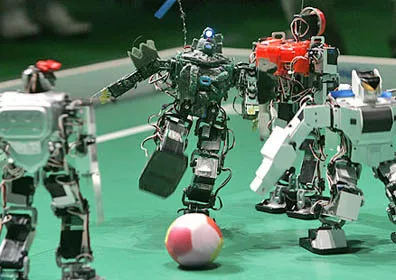At the request of Mrs Meflyn Awana, we created:
Blockchain Tool School - A Fundamental Analysis of Cryptocurrency
Lesson 1 - Blockchain Tools
Lesson 2 - Why are Tokens Valuable? (exact measurable scarcity)
Lesson 3 - What can Blockchain Do for Me? (utility of secure and immutable data transfer and storage)
Lesson 4 - Adoption

Mrs Meflyn Awana
Lesson 1 - Blockchain Tools
A true blockchain, like bitcoin, is a "math contest video game" called "mining" where calculators are allowed.
The first student to solve a math problem correctly wins BTC tokens in their wallet address code, then another math problem is generated, forever. After every correct answer, spectators can send BTC and a small of information data to each other.
Weather you consider bitcoin to be a currency, security, or property, true blockchains all share an identical capital structure.
supplemental materials – the evolution and natural limitations of true blockchains:
https://steemit.com/steem/@dimimp/steemjet-world-cup-day-17-the-elimination-round-games-begin
Today, 80% of all bitcoins have been mined by the kids who built the best robotic calculators and the prize purse is eternally shrinking.

There are easier true-blockchain math contests where you can win less valuable tokens like LTC/DGB/VTC/PASC/DOGE/MEC/MZC/ZET.
Lesson 2 - Why are tokens valuable? - Exact measurable scarcity (EMS)/Utility/Adoption
Like fire and electricity, the discovery of exact measurable scarcity (EMS), will never be as celebrated as its engineered use cases. EMS was neither discovered nor perfected when bitcoin brought the true-blockchain sector to life in 2009, but for the first time in recorded history, humans were allowed to perform truly-secure data storage and transfer of truly scarce virtual objects.
This is possible because unique large numbers can now be used as wallet addresses to store bitcoin balances. The total number of bitcoins is exactly 21 million. Printing only a limited exact number of bitcoins was the easy part in creating a useful tool out of the theoretical concept of scarcity. The difficult part was creating a computer program that could generate infinite unique wallet numbers on which to store a finite number of bitcoins as a ledger balance.
Now that blockchain tools have been engineered and proven robust, the next generation of data security systems will be built using these neew tools.
It is virtual scarcity to be exact, but it is the “scarcity,” and not the “virtual” that allows the technology to function usefully.
Nobody knows, to any acceptable statical degree of certainty, how many atoms of any element exist in the known universe nor can they predict how easily elements will be synthesized or extracted ten years from now. No further discussion of the concept of scarcity is necessary at this point. Please refer to the supplemental textbook Olivia and the Superstar for any further clarification.
https://steemit.com/steem/@dimimp/the-steemjet-world-cup-day-7-my-personal-ronaldo
The parallel concept Olivia's unique DNA is used to explain the application of infinite unique large numbers as blockchain tools which make her digital wallet unique so that she can send her own Olivia coins from her own unique wallet number.
Here is Olivia generating her first unique wallet number, her face implies uniqueness like the code in her DNA:

Here is Olivia sending her wallet balance to many unique wallets around the world. The power of instant global transfer of a virtual token of true measurable scarcity in the hands of a child:

Olivia provides the reader with a clear and natural understanding of scarcity and its new application.
Here is a review of the 2-dimensional vector in our 3-dimensional space that makes blockchain tools possible:
Still not convinced?
Try this experiment:
Generate bitcoin private keys until you find 2 that match the first 4 characters.
Just kidding, it might take you days until you find a match. It might take you a week to match the first 5 characters and a month to match the first 6. It can take you anywhere from 1 to 30,000 years to generate a complete matching bitcoin private key. Yes, this is not perfect uniqueness, but for all real-world applications, it is acceptable proof of statistical capability. So for all practical purposes, science considers this margin of error good enough for personal and business use where the first rule of security is to never put all your eggs into one basket or never leave all your tokens in 1 address.
Conclusion: The theoretical power of exact measurable scarcity (EMS) has been effectively harnessed by blockchain tools like bitcoin to improve our current level of security for both storage and transmission of valuable information.
Lesson 3 – What can blockchain do for me? - Utility (of secure and immutable data transfer and storage)
There are limits to what blockchain tools are capable of, therefore, the chief business sectors that stand to benefit from secure and immutable data transfer and storage are:
- The secure value and data storage business sector (BTC)
- The secure value and data transmission business sector (LTC)
- The secure unique identification business sector (DGB)
- The secure immutable transparent business accounting/performance tracking/record retention business sector (STEEM)
How do you measure blockchain security? It is a function of the amount of energy required to:
- Slow transactions
- Restrict certain transactions
- Trick another user into thinking that they received tokens for a limited period of time (double-spend)
Any of these 3 actions is considered an attack. The more energy it takes to perform an attack, the greater the security of the blockchain. Remember that a true-blockchain is just a series of single question math contests where the chain security increases (higher hash rate) as the competition grows stronger, and vice versa.
supplemental materials – the evolution and natural limitations of true blockchains:
https://steemit.com/steem/@dimimp/steemjet-world-cup-day-17-the-elimination-round-games-begin
Lesson 4 - Adoption (market penetration) – Who else owns your crypto?
Recall that the value of a token is based on a combination of 3 value factors:
A) Exact measurable scarcity (EMS)
B) Utility
C) Adoption
A) All blockchains have EMS weather the total number of tokens is limited or increasing based on blocks produced (STEEM) or time (NXS). Supply and demand principles indicate that, all else being equal (utility and adoption specifications of the 3 valuation metric variables), a token with limited supply will hold value better than a token with an unlimited known quantity. This is the most easily comparable metric of all the 3 value factors.
B) All functional blockchains have utility. This is the second most easily comparable value factor because public blockchains publish these utility specifications:
recall the chief utility benefits of blockchain tools:
- secure value and data storage (BTC)
- secure value and data transmission (LTC)
- secure unique identification (DGB)
- secure immutable transparent business accounting/performance tracking/record retention (STEEM)
this translates into
- most secure data storage = most expensive blockchain to attack = BTC
- next most expensive blockchain to attack = LTC/DGB = insignificantly less secure than BTC, but significantly cheaper and faster transactions
- most secure true blockchain with unique ID feature
- most secure immutable transparent business accounting/performance tracking/record retention (STEEM/Steemjet)
Quantifiable utility metrics (blocktimes, transaction fees, total nodes, transactions per second, blockchain size) are easily measurable and comparable.
Adoption metrics, however, are both quantitative and qualitative.
C) Adoption – Who else owns your blockchain?
The network effect that a community has is not as easily cloned as the code from the blockchain tools that they use. This is the most esoteric and enigmatic concept of the entire course and frankly the one that poses the most liability to the benefactor, but I promise to publish a limited liability version of this module soon.
Please point out any errors, thanks!



